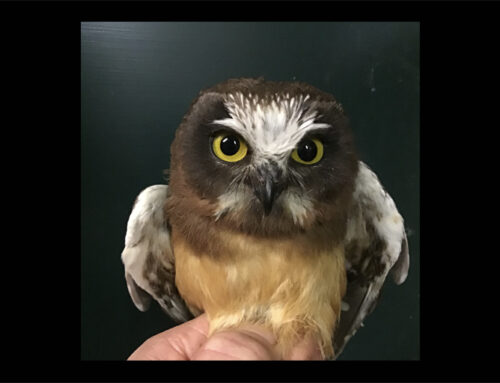Well, we keep plugging away. We’ve been able to band all 35 nights of the season so far, and we are admittedly wearing a bit thin some nights. Thankfully, it has been a relatively cool summer and the mosquitoes have not been too bad recently. As is expected at this time of the season, the juvenile Saw-whets are making up the bulk of the owls now. Unfortunately, despite the fact that this is typically the best time of the summer for Long-eareds, they have been pretty scarce recently. To date, we have banded 161 Saw-whets (112 juveniles & 50 adults) and 15 Long-eareds. The best night of the season for juveniles so far was July 23 when we banded 19. Hopefully they’ll keep coming and the Long-eareds will pick up a bit soon.
We recently banded a Long-eared Owl with interesting molt. I have only ever seen one Long-eared with two generations of adult flight feathers and a retained juvenile feather. We love working with these owls and continue learning and experiencing new things.
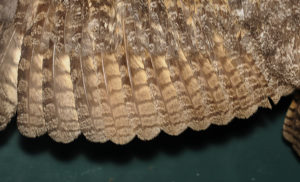
A Long-eared with three generations of secondaries.
We were excited to band the first Common Nighthawk for the summer project.
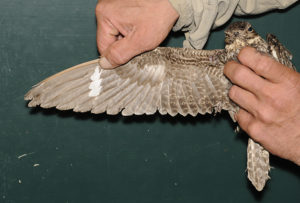
The first Common Nighthawk banded during the summer owl research project.
Every summer we catch a few bats. It’s truly incredible to see these animals up close. We caught the first one of the season a few nights ago, a gorgeous Eastern Red Bat.
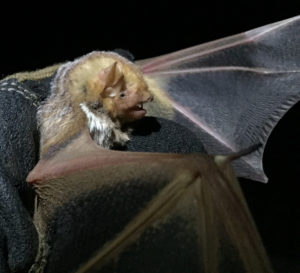
An Eastern Red Bat
There have been lots of Spring Peeper froglets around this summer, and they can be pretty entertaining. Every night there are a few that are determined to climb to the top of tall grass, where they just sit and look around.
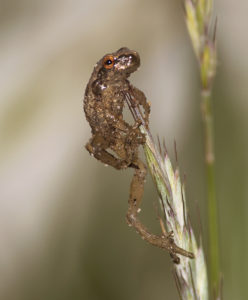
A Spring Peeper froglet making it to its high perch.
The moths are also keeping us occupied during slower nights.
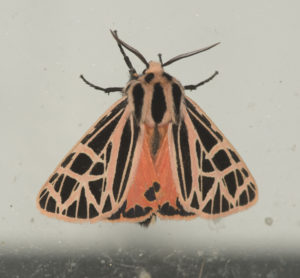
A Parthenince Tiger Moth
Chris Neri & Hannah Toutonghi



